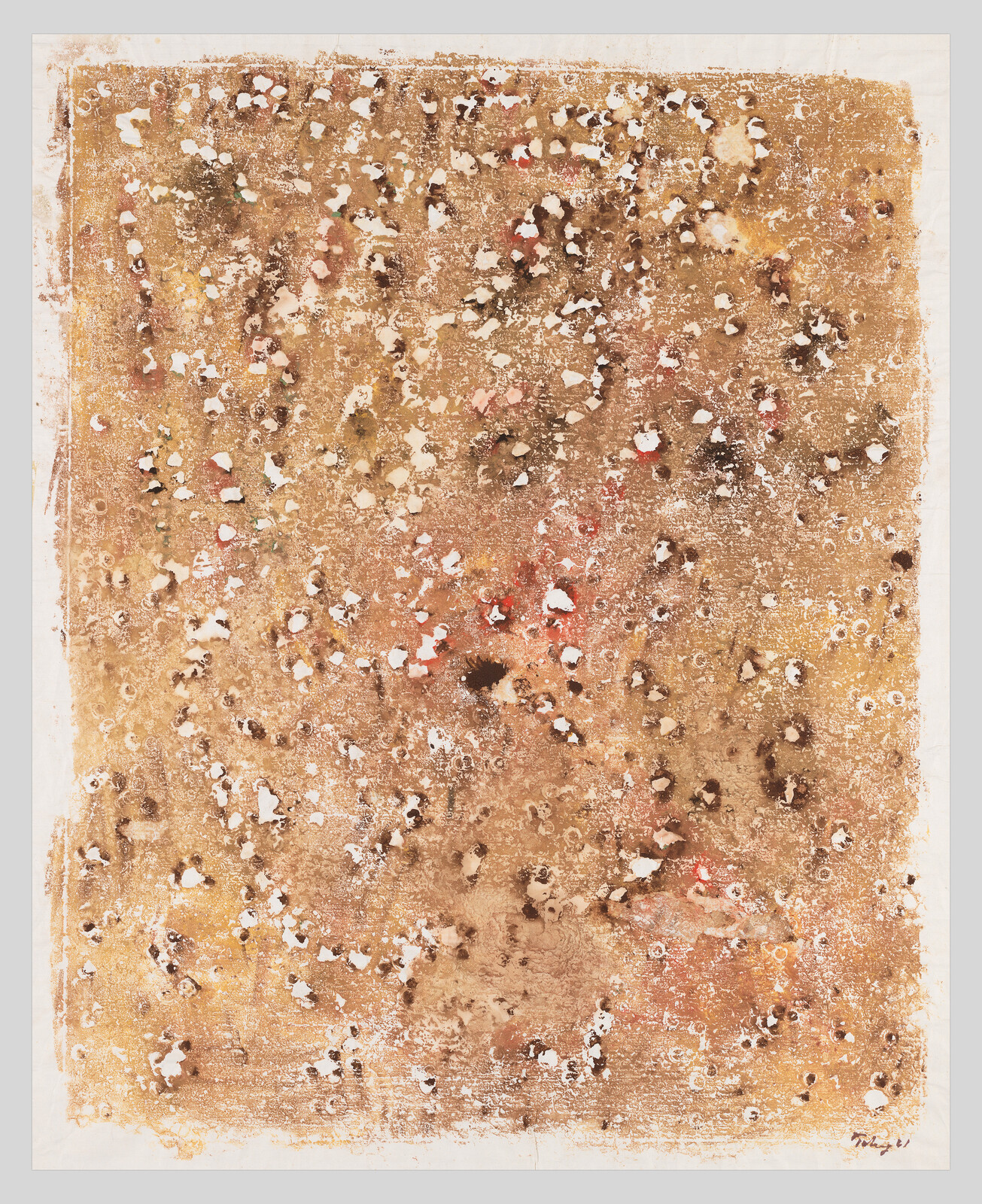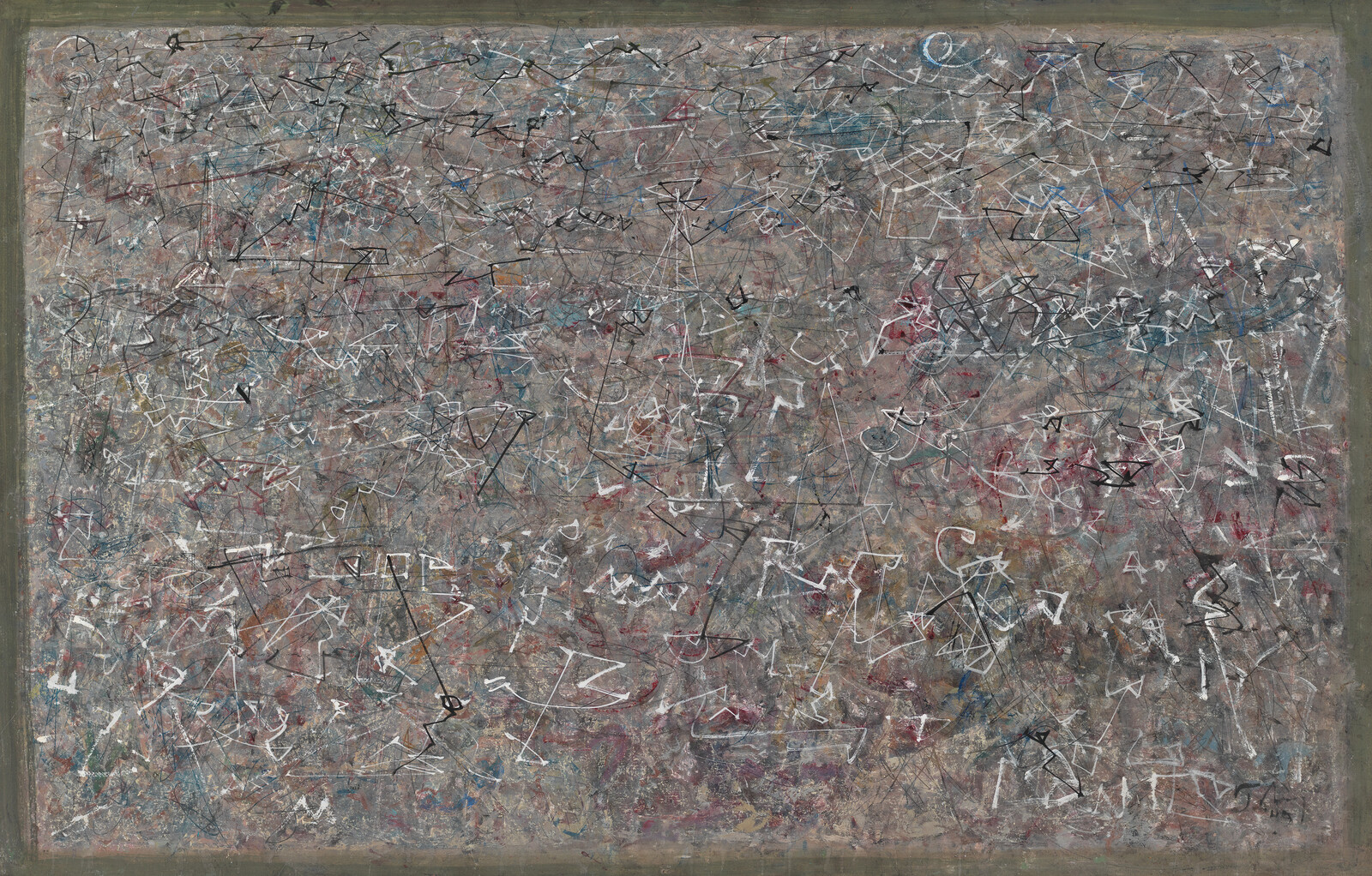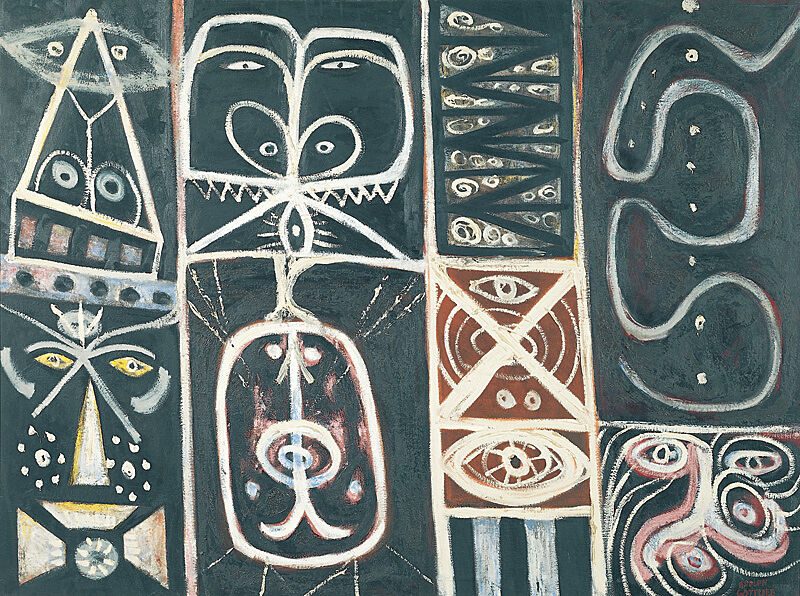Mark Tobey, Universal Field, 1949
July 10, 2012
0:00
Mark Tobey, Universal Field, 1949
0:00
Narrator: In Universal Field, Mark Tobey has woven black and white skeins of paint together into a delicate net, which seems to hover over the atmospheric gray ground. The effect is light and ethereal. It’s also very calligraphic—and not by accident. Tobey had traveled to Japan and China, where he studied calligraphy. Soon after his return, he invented the technique you see here, which he called “white writing.”
During the middle of the twentieth century, a number of painters had the ambition of producing an “all-over” composition. The idea was that the painting would present an utterly unified experience to the viewer—that it would have a real power in its wholeness. Tobey was a pioneer in developing the all-over canvas. He began making works like this one—unified by skeins of paint—before Jackson Pollock began his drip paintings. There’s some resemblance between the two artists’ bodies of work, but they were produced in very different spirits. Looking at a Pollock, for example, the poet William Carlos Williams once exclaimed, “paint on canvas—nothing else is real!” That may be poetic overstatement, but it captures Pollock’s commitments to materiality and immediacy. By contrast, Tobey’s quiet, lyrical paintings encourage a spiritual, contemplative state.
In Signs & Symbols.



